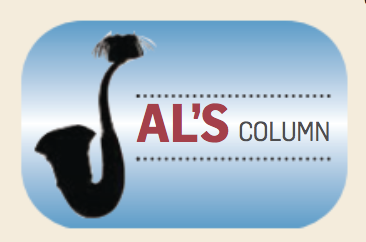December 24/31, 2018: Volume 34, Issue 15
By Curtis Colegrove
 There are many factors that go into a successful flooring installation project. These include selecting the appropriate floor material and applying the proper installation procedure. Equally important—but often overlooked—is careful preparation of the concrete slab. Cutting corners on this critical step can lead to problems down the road that can negatively impact the floor’s performance and shorten its lifespan.
There are many factors that go into a successful flooring installation project. These include selecting the appropriate floor material and applying the proper installation procedure. Equally important—but often overlooked—is careful preparation of the concrete slab. Cutting corners on this critical step can lead to problems down the road that can negatively impact the floor’s performance and shorten its lifespan.
The right floor prep can make the difference between a successful job or a complete failure. Contractors are under pressure to complete projects on ever-shorter schedules with increasingly tighter budgets. The imperative to get the job done quickly and efficiently sometimes outweighs the need to fully prepare and test concrete slabs.
So, what constitutes good concrete slab prep? Refer to ASTM F710 “Standard Practice for Preparing Concrete Floors to Receive Resilient Flooring” for a complete guide and follow these four vital steps:
Clear all dust and residual materials. First and foremost, the concrete floor should be clean, dry and smooth. That means free of any dust, solvent, paint, wax, oil, grease, residual adhesive or other materials that might prevent a strong bond. Due to accelerated project timelines, installers may be tempted to leave adhesive residue from previous installations. The technical impact of any materials left on the concrete may be damaging to a project as it can compromise adhesion of the new floor. Adhesives will not stick to the substrate causing material failure.
Fill in the holes. Cracks, grooves, control joints and other irregularities must be filled or smoothed with latex patching or underlayment compound. Use a cementitious patch primarily made from Portland cement to fill cracks and irregularities. Be sure to use a moisture-resistant patch when it is over ¼ inch in thickness. If not properly filled and the crack extends all the way through the substrate, it can be a source of moisture intrusion. Patching will also correct any uneven surfaces in the substrate to provide a nice, smooth, consistent substrate.
Note: Expansion and other moving joints should not be filled; check with the manufacturer for the recommended joint covering system.
Test for moisture and alkalinity. The standard also calls for moisture and pH (alkalinity) testing of the slab. If using the probe test method for measuring moisture vapor emission rate (MVER) outlined in ASTM 2170 “Standard Test Method for Determining Relative Humidity in Concrete Floor Slabs Using in situ Probes,” the maximum limit specified by ASTM F710 is 75% relative humidity (RH). Although the standard limits RH to 75%, manufacturers often approve installation above 75% RH, if appropriate moisture mitigation steps are taken. While the standard does not define a maximum or minimum pH, it notes that pH levels below 7 and above 10 can affect resilient flooring and/or adhesives. Check the flooring installation instructions for the manufacturer’s specified limits for both RH and pH.
Keep it level. Flatness is another important factor for optimum floor performance and service life. The ASTM F710 standard calls for the slab to vary no more than +/- 3/16 of an inch across 10 lineal feet. High spots should be brought down and low spots should be filled with an appropriate material. This should be done by grinding high spots and filling in low spots with a cementitious patch.

